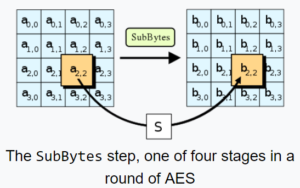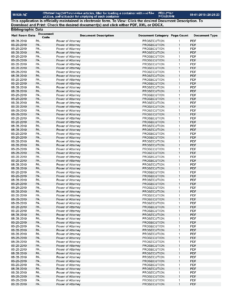Some weeks ago the Trademark Office at the USPTO released its Exam Guide (dated August 2, 2019) implementing its new rule requiring foreign applicants to be represented by US counsel. The first Exam Guide received a well-deserved firestorm of criticism.
A first category of criticism centered on a proposal that as for each trademark applicant who listed a mailing address in the US but was not a US citizen, the Trademark Office would carry out a review of the applicant’s immigration and visa status, and would require various proofs that the stated address was indeed the actual domicile of the applicant, even after the applicant had hired US counsel. The proofs might for example include a lease or utility bill or a corporate certificate of good standing.
In response to that criticism, the USPTO has today released its First Revised Exam Guide. Under this First Revised Exam Guide, once the foreign applicant hires US counsel, the Trademark Office will cease its inquiry regarding, for example, immigration or visa status, and leases or utility bills or certificates of good standing.
A second category of criticism centered on the Office requiring that the applicant (whether foreign or domestic) reveal his or her or its domicile address. This “domicile revelation” requirement would be triggered by any attempt on the part of the applicant to use a post office box or “care of” address to receive postal mail.
Under today’s First Revised Exam Guide, a petition procedure is available by which in an “extraordinary situation” an applicant could petition for permission to avoid having to reveal his or her domicile address. The petition, if granted, would permit the applicant to supply a post office box or “care of” address instead of revealing the applicant’s domicile address.
What is unfortunate is that this First Revised Exam Guide, although a step in the right direction away from some of the problems of the original Exam Guide, still fails to respect the realities of living and doing business in the United States.
I will first say that my heart goes out to any person who is a battered spouse and would now apply for a US trademark registration. This First Revised Exam Guide contemplates that to avoid making his or her residence address a matter of public record, the battered spouse would be forced to put into the public record a petition and supporting documents regarding the battering. This cannot possibly be the right way for the Trademark Office to proceed in such situations.
The First Revised Exam Guide seems to intentionally ignore the very legitimate fact that a USPTO customer might wish to (or need to) use an address for receiving postal mail that is non-identical to the domicile address. I can give several examples of this:
- There are many locations where people live that do not receive delivery by the US Postal Service. This includes for example most homes and businesses in most rural counties of Colorado.
- Some businesses choose to receive mail at a post office box so as to be able to control who exactly handles the incoming mail.
- Some persons and businesses choose to receive mail at a post office box because they change their office or home addresses from time to time and do not wish to risk losing important mail.
- Some persons and businesses are located in areas where crime is a concern and a post office box offers a much more secure form of delivery than street delivery.
As for point 1, I know many people who live in Summit County, Colorado which is a place where the postal service simply does not deliver mail to most residences or businesses. For most people who live in Summit County, Colorado it is impossible to receive mail anywhere other than a post office box.
As for point 3, what comes to mind is one client of our firm, a business that has changed its office address four times in five years, but has kept the same post office box for those five years. That client, it seems to me, has a perfectly legitimate interest in using a post office box to receive its mail, and should not have to risk loss of important mail just to satisfy the USPTO’s First Revised Exam Guide.
Another client of our firm, a natural person, has moved twice in the past year and is likely to move again in the next year. Indeed for the next two months she will be living only in a travel trailer while touring across the United States. This person has had a post office box that has remained unchanged for the past year and will remain unchanged in the next year. It seems unreasonable that this person would be forced to file a petition just to get the USPTO to send mail to the post office box so as to keep from having important mail get lost.
In particular, if the USPTO were to refuse to send postal mail anywhere other than to the domicile address, the USPTO would fail in most rural counties of Colorado including Summit County, Colorado. Most registration certificates, if mailed to domicile addresses in rural counties of Colorado, would get lost in the mail or returned to sender as undeliverable. This is simply a fact and USPTO’s selection of exam guide language will not suddenly cause the US Postal Service to start delivering mail to places to which it did not previously deliver mail.
Let me state this point as clearly as I can. For many years, my firm’s office was in Summit County, Colorado. Our office was in a multistory office building with an elevator, in the center of Dillon, Colorado. And the postal service did not deliver mail to any address in that building (or to any other residential or business address in Dillon, Colorado). The only way that my firm was able to receive postal mail was by means of a post office box. Our firm’s office is no longer in Dillon, Colorado but the situation for mail delivery in Summit County is the same now in 2019 as it was then — nobody in that office building is able to receive postal mail anywhere other than at a post office box. If the Trademark Office were to persist in its refusal to direct mail to post office boxes, then no business in that office building would be able to obtain a US trademark registration.
But it must also be considered that if the USPTO were to refuse to send postal mail anywhere other than to the domicile address, then businesses that change their office addresses from time to time would be at an unnecessarily greatly increased risk of loss of important USPTO mail.
Likewise if the USPTO were to refuse to send postal mail anywhere other than to the domicile address, then persons and businesses in areas where crime is a concern would be denied the ability to secure their important USPTO mail by having it sent to a post office box.
What a disappointment that the Trademark Office did not communicate with its user community when devising this First Revised Exam Guide. Now the Trademark Office will have to devise a Second Revised Exam Guide to “clarify” that the applicant is indeed permitted to receive mail at a post office box. The Second Revised Exam Guide will need to “clarify” that the revelation of the applicant’s domicile will not be linked in any way to the completely separate question of what address the USPTO will use to send postal mail.
Yes, if the Trademark Office feels it has no choice but to force the applicant to reveal where he or she sleeps at night, so be it, but there is no legitimate reason for linking this address, once revealed, to the address used for mail delivery to the applicant. Let the domicile address, once revealed, go into some part of the application file that is not the same as the correspondence address in the file.









